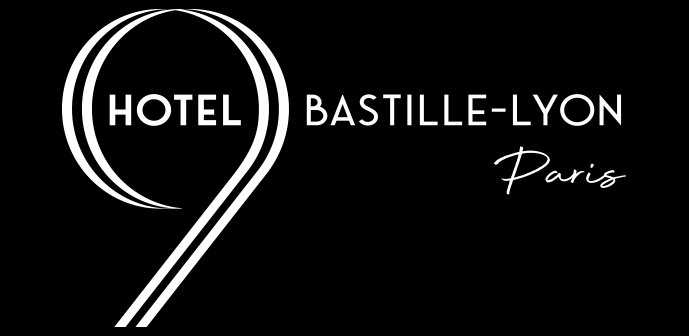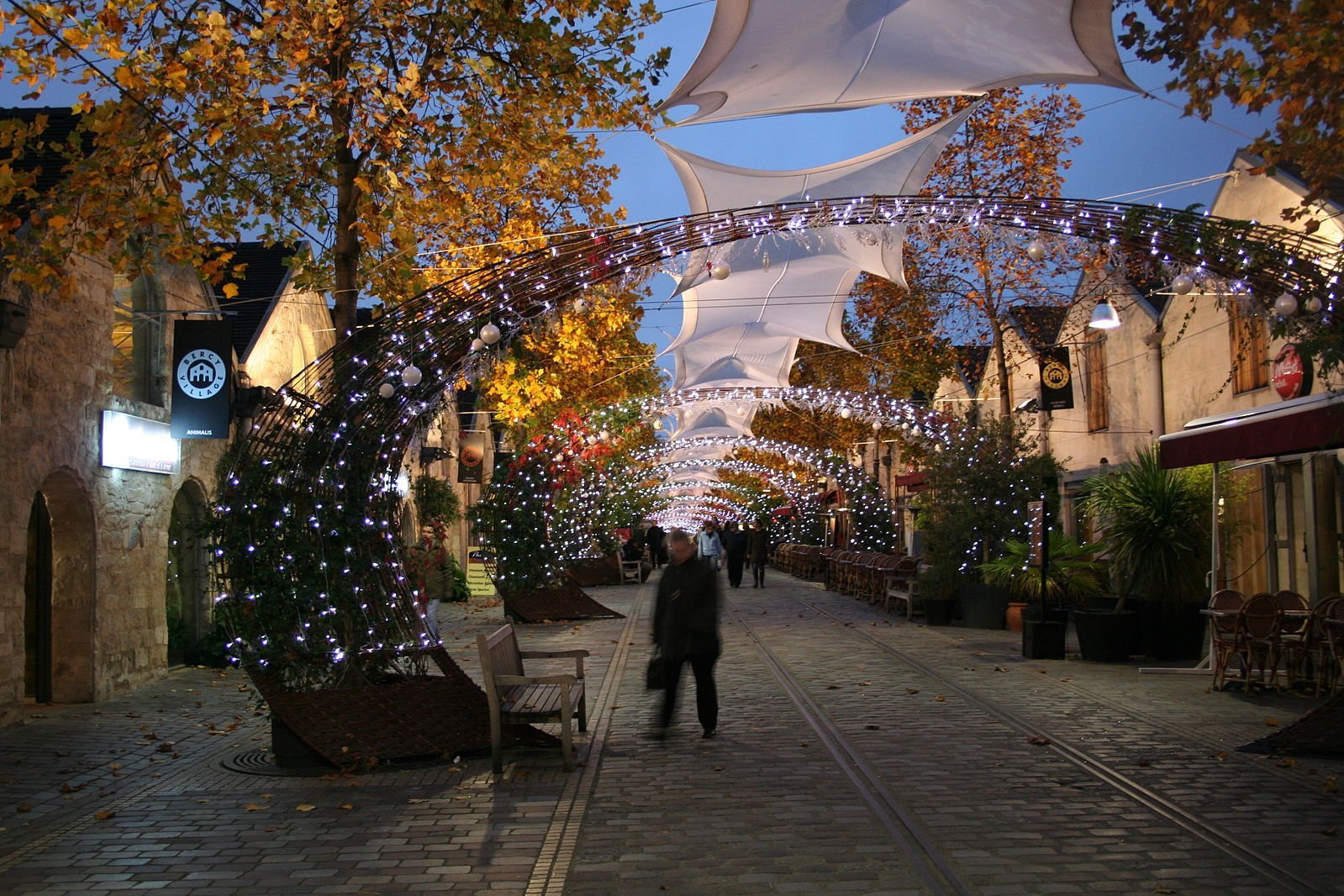Cour Saint-Émilion
9Hotel Bastille-Lyon Near Cour Saint-Emilion in Paris
Just a 10-minute walk from the hotel
A Well-Located Hotel Near Cour Saint-Emilion
Located along the Seine, downstream from the 9Hotel Bastille-Lyon, Cour Saint-Emilion is an iconic spot in the Bercy neighborhood. Once part of the former wine warehouses in the village of Bercy, it now houses a shopping center, but also numerous wine bars and shops where Parisians gather after work or on sunny days to enjoy a glass of wine and a platter of charcuterie or cheese.
Cour Saint-Emilion: A Place for Parisian Strolling
Bercy’s history as the world’s largest wine market is now just a memory, with only a double row of wine cellars remaining, where cafés, wine bars, and restaurants have set up their terraces along a cobblestone street. As soon as the sun comes out, Parisians, wanderers, and tourists flock to the tables and benches to share a drink or a good meal with friends.
This quiet haven at the heart of Paris, just steps from the Ministry of Finance and the largest sports and concert venue in Paris, the former Palais Omnisport de Paris-Bercy now known as AccorHotels Arena, attracts a diverse crowd. On weekdays, office workers gather at lunchtime for a working lunch or with colleagues for an “afterwork” drink. On weekends, families, strollers, and tourists take over.
True to its tradition, this small neighborhood on the banks of the Seine offers both wine and food, and hosts many events throughout the year. The arrival of Beaujolais Nouveau is notably celebrated every year.
The Former Wine Warehouses of Bercy
If you pay a little attention as you walk through Cour Saint-Emilion, you’ll notice that you’re walking on cobblestones with railway tracks still visible between them. However, you won’t see any trains or trams passing through this square. These are remnants of a glorious past, when Bercy Village was a hub of activity in Paris, either selling wine or driving up prices.
In the 19th century, the wine merchants were so influential that they didn’t hesitate to call upon Napoleon III to demand the enforcement of laws throughout France. The merchants felt that wine producers were cheating them by using different units of measurement from one region to another.
Wine sales were highly profitable at a time when Paris’s consumption was rising steadily. For instance, wine consumption in the French capital increased from one million hectoliters in 1800 to 3.55 million hectoliters in 1865. The largest part of this wine was stored in Bercy before being sold throughout Paris after the merchants blended the wines.
The Rich History of Cour Saint-Emilion
To understand the history of this square, named after a famous wine from the Bordeaux region, we must go back in time. The name Bercy (also written as Bercix) dates back to the 12th century, when it was a commune outside of Paris.
In the early 18th century, the wine trade began to develop in Bercy, encouraged by a Burgundy winemaker during the reign of King Louis XIV. The Sun King allowed the tax on wines distributed in Bercy to be lifted. At the time, a customs barrier was set up at Quai de la Rapée. This indirect tax, levied on the value of goods, allowed for the control of what entered and left the city, helping to limit smuggling. Since wine was considered a non-essential product, it was usually taxed when it entered Paris. However, by storing it outside the city, merchants were able to avoid these taxes when importing wine from French provinces.
In 1810, Baron Louis, then Minister of Finance, bought large plots of land in Bercy, where the warehouses were located. After refurbishing the area through a company he founded, he developed the wine trade, turning it into one of the world’s largest wine storage facilities.
The Wine Trade in Cour Saint-Emilion
Wine barrels from the Burgundy, Bordeaux, Languedoc, Beaujolais, and Rhône regions arrived in Paris by boat on the Seine. Before entering the capital, these barrels were unloaded and stored in the wine cellars of Bercy.
However, as wine consumption continued to rise under the First Empire, a new wine market was built. Despite the project spanning three decades, the market’s capacity was quickly surpassed. In the meantime, railways were laid down to transport the wine barrels more quickly than by boat. It is these rails that can still be seen in Cour Saint-Emilion, dating back to the golden age of rail travel.
In 1869, under Napoleon III, the authorities decided to expand and renovate the Bercy warehouses, which would soon cover an area of 42 hectares. The Petit Bercy and Grand Bercy were built by the famous architect Viollet-le-Duc. From then on, wine barrels passing through Paris were stored in Bercy. The merchants did more than just bottle the wine; they also blended it in their cellars. These blended wines became their fortune until the 1960s. However, as the quality of these wines often became questionable and customers began to demand higher quality, this marked the beginning of the end for them, while estate-bottled wines gained prestige and became the choice of refined palates.
The Major Developments in the Bercy District
It was during the era of grand construction projects under François Mitterrand that the former village of Bercy was radically transformed. In the early 1980s, the Palais Omnisport de Paris-Bercy, now known as the Accor Arena, was built. This sports and concert venue has a capacity of over 20,000 seats.
A little further along the Seine River, between the 9Hotel Bastille-Lyon and Cour Saint-Emilion, the Ministry of Finance and the Economy was built in 1990. The restructuring of the Bercy district and the decline of the merchants’ trade marked the end of the wine warehouses. Today, only the Parc de Bercy, created on the former site of the warehouses, preserves some of the old pavilions, as well as Cour Saint-Emilion, which also gives its name to the nearby metro station.
Some of the cellars were listed on the Supplementary Inventory of Historical Monuments in 1985. This includes the Lheureux cellars, now home to the Pavillons de Bercy, a cultural venue dedicated to the heritage of performing arts and fairground arts.
The architecture of these warehouses also inspired the design of Bercy Village, a shopping and entertainment area opened in 2000. Around the Place des Vins-de-France, a business district was developed, and several streets and squares in the neighborhood still bear names that evoke this prestigious past when Bercy supplied all of Paris with wine. A tribute is paid to Pierre Le Roy de Boiseaumarié, the creator of Appellations d'Origine Contrôlée (AOC), which helped improve the quality of wines and increase respect for vineyards and their care.
Now that you know all of this, you won’t be surprised to find so many Parisians seated around a glass of wine in one of the wine bars of Cour Saint-Emilion. When you join them, after strolling along the Seine, you’ll remember that in this very spot, not long ago, stood one of the world’s largest wine storage facilities. Perhaps, if you listen carefully, you’ll hear the merchants calling out to sell their precious merchandise to the highest bidder, or maybe the metallic wheels of a train arriving at the station, loaded with barrels full to the brim.


